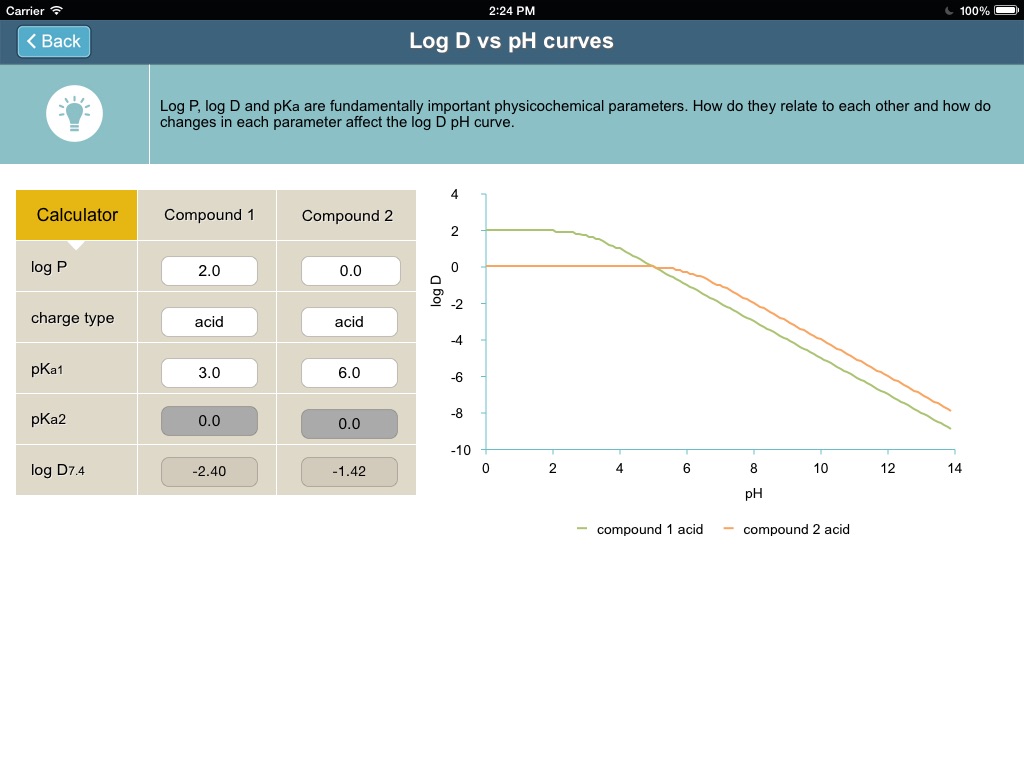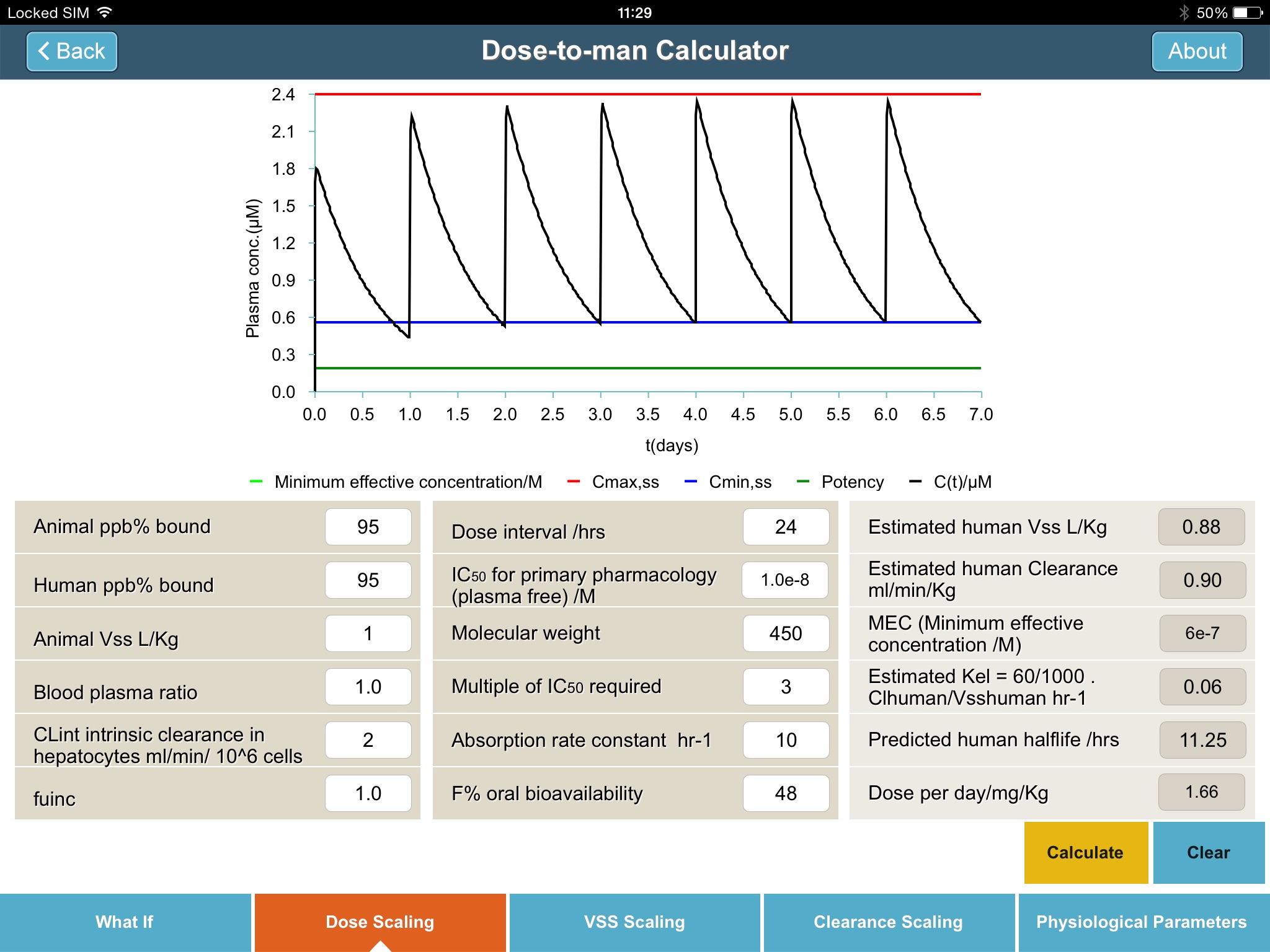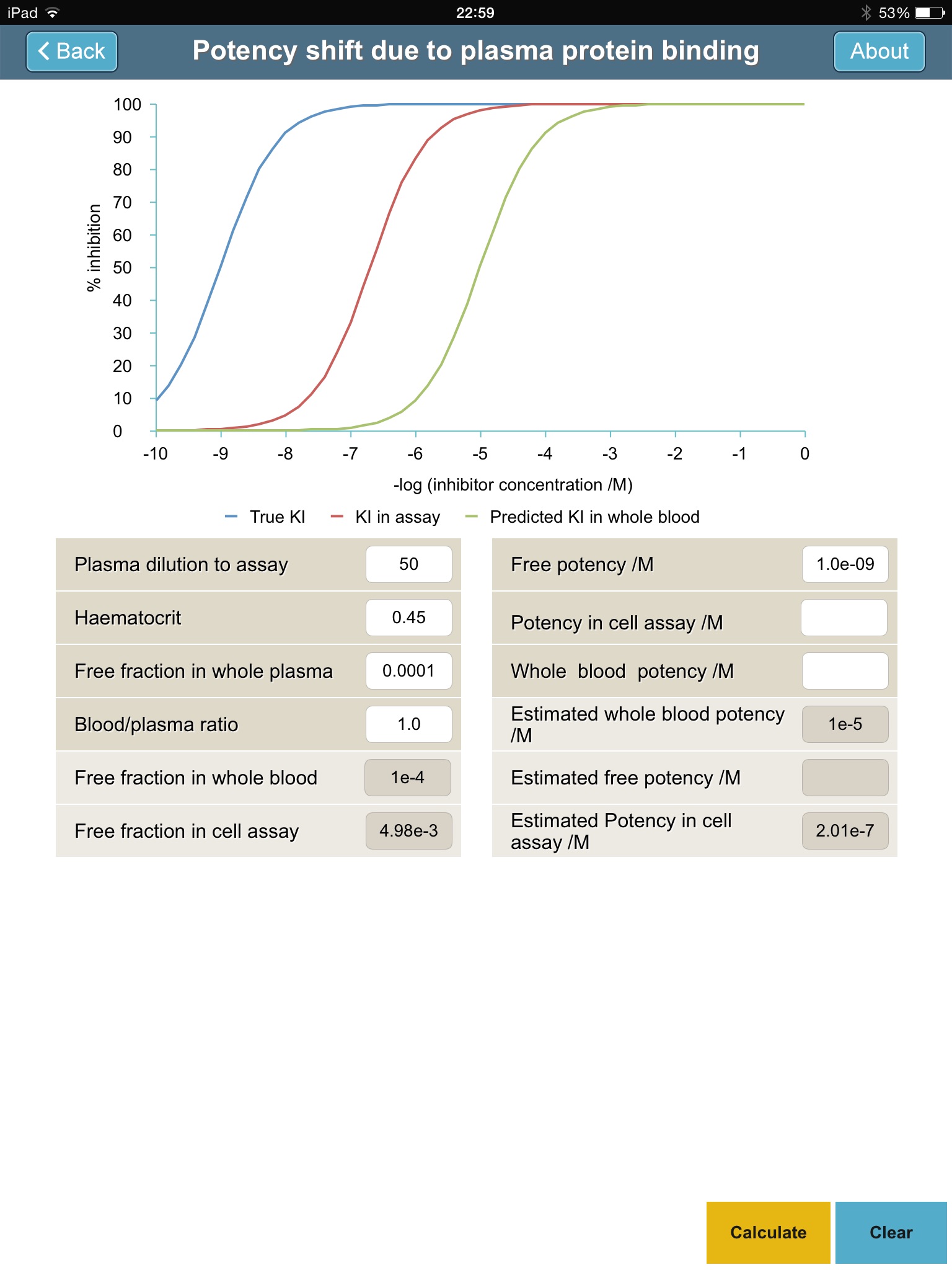
Medicinal Chemistry Toolkit app for iPhone and iPad
Developer: Molecular Materials Informatics, Inc.
First release : 28 Aug 2014
App size: 12.98 Mb
Medicinal Chemistry Toolkit
The Medicinal Chemistry Toolkit App is currently under review.
General Disclaimer:
For all documents, data and information available via this App, The Royal Society of Chemistry (RSC) does not warrant or assume any legal liability or responsibility for the accuracy, completeness or usefulness of any information, apparatus, product, formula, compilation, dosage, procedure or process disclosed. Specifically, any information within this App should not be relied upon in any way whatsoever for any assessment of risks concerning any specific procedure or process. You must conduct your own risk assessment for any experiment, procedure, or process. Risk assessments have NOT been carried out by the RSC and the RSC gives no assurance or warranty that any information and/or resources within this App is safe or achieve their stated aims. In particular the information within this App may no longer be correct or appropriate to local regulations, legal codes, practices or policies, or may be out of date. The RSC takes no responsibility for any injury, loss or damage, financial or otherwise, suffered or caused in any manner whatsoever by the use or application of this App.
Revised: May 19th, 2016.
The Medicinal Chemistry Toolkit app is a suite of resources to support the day to day work of a medicinal chemist. Based on the experiences of medicinal chemistry experts, we developed otherwise difficult-to-access tools in a portable format for use in meetings, on the move and in the lab. The app is optimised for iPad and contains calculator functions designed to ease the process of calculating values of: Cheng-Prusoff; Dose to man; Gibbs free energy to binding constant; Maximum absorbable dose calculator; Potency shift due to plasma protein binding; Log D vs pH curves; Attrition Modeller, Drug-drug interactions; GClogP, Ligand Lipophilic Efficiency and compound quality calculations.



